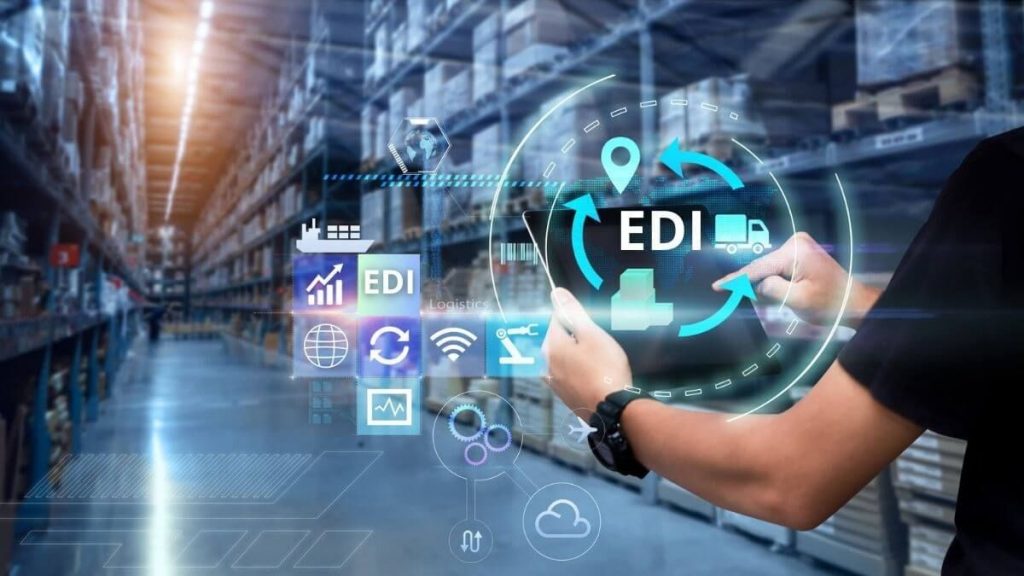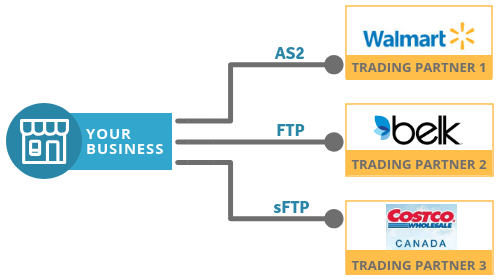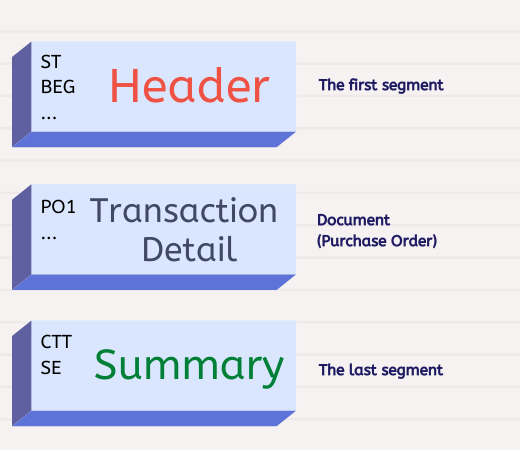Canadian EDI Provider: EDI2XML – Reliable and Innovative EDI Solutions for Canadian Companies
Recent geopolitical and economic complexities between Canada and the U.S. have driven many businesses to seek local technological solutions, Canadian companies are increasingly turning to trusted, homegrown partners for their EDI needs.
With over 25 years of industry expertise, EDI2XML delivers tailored EDI solutions that address the unique requirements of the Canadian market, ensuring efficient integration and enhanced operational reliability.
This article explores why EDI2XML is the best choice for Canadian companies and how our comprehensive EDI solutions can replace American providers with a secure, efficient, and scalable alternative.
The Shift toward Canadian EDI Solutions
Recent changes in US trade policy have made Canadian companies start looking at local EDI providers. In just the last month, many businesses have questioned their dependence on US-based services because of new tariffs and rising trade tensions. Many organizations are motivated by the principle of “buying Canadian” to support the national economy and foster a sense of pride in homegrown solutions. As most existing EDI service providers are large US companies, there has been a growing need for a dependable Canadian alternative.
Canadian EDI Provider with Over 25 Years of Proven Reliability
EDI2XML brings more than 25 years of industry experience to the table. Our long-standing presence in the EDI market is a testament to our commitment to excellence, reliability, and customer satisfaction.
- Decades of Experience: Our extensive track record in providing EDI services to businesses of all sizes means that we have encountered and solved a myriad of challenges. This experience ensures that our EDI solutions are robust, tested, and scalable.
- Diverse Client Base: Whether you are a large corporation with high transaction volumes or a small-to-medium-sized business (SMB) or e-commerce venture, our EDI solutions are designed to meet your specific needs. We understand the diverse requirements across industries and tailor our offerings accordingly.
- Proven Results: We’ve successfully connected Canadian businesses with partners around the world—including Europe, the United States, and the Middle East—ensuring their data exchanges are efficient, secure, and reliable. Our commitment to continuous improvement and technological advancement means our clients benefit from the latest innovations in EDI.
Reliable EDI Solutions for Every Canadian Business
Our reputation as a reliable Canadian EDI provider is built on our ability to offer solutions that are both comprehensive and flexible. By understanding the specific needs of Canadian companies, we have crafted EDI services that not only ensure compliance but also drive efficiency and cost savings.
Detailed EDI Solutions: Tailored for Canadian Businesses
At EDI2XML, we offer a broad range of EDI solutions to suit every business model. Our offerings are designed to provide flexibility, security, and scalability while maintaining ease of use and excellent support.
Fully Managed EDI Solution
Our Fully Managed EDI Solution is the perfect choice for companies looking for a turnkey service that minimizes the technical burden on internal teams. This solution provides a complete end-to-end EDI process managed by experienced professionals.
Fully Managed EDI – Key Benefits
- Ease of Use: The fully managed solution simplifies EDI operations, enabling businesses to focus on core activities while we handle the all technical details.
- Comprehensive Support: From implementation to ongoing maintenance, our team provides dedicated support, ensuring seamless communication and quick resolution of any issues.
- Cost Efficiency: By outsourcing your EDI management, you reduce the need for internal IT resources and avoid expensive, time-consuming setups.
- Scalability: Our managed services are designed to grow with your business. Whether you are experiencing a surge in transactions or planning long-term expansion, our solution adapts to your needs.
Fully Managed EDI – Ideal For
- Companies with limited IT resources
- Businesses seeking to minimize operational overhead
- Organizations looking for rapid deployment and reliable support
EDI Web Services (REST API)
Our EDI Web Services is a powerful online tool (REST API) that helps businesses and developers easily convert EDI files to XML and back. It works over the internet and doesn’t require any EDI knowledge — you only need to work with XML, a format most developers already know.
This EDI service is fast, flexible, and easy to start. You can:
- Use a ready-to-go Java client or tools like Postman
- Start converting EDI in under an hour
- Avoid contracts – pay only for the data you process
- Try it for free for 15 days
We support many types of EDI messages and provide sample files and full documentation to help you get started quickly. Plus, our support team is always here to guide you.
EDI Web Services – Key Benefits
Our EDI2XML Web Service offers several advantages for developers and IT project managers:
- No EDI Expertise Needed: Work with XML, a format familiar to most developers, eliminating the need for specialized EDI knowledge.
Quick Setup: Start using the service in less than an hour after subscribing and receiving your API tokens.
Easy Integration: Utilize our ready-to-use Java client to seamlessly incorporate EDI into your existing workflows and projects.
Time-Saving Resources: Access XML schema files for all supported transactions, streamlining the development process.
Expert Support: Benefit from our over 24 years of experience in EDI and integration projects, providing you with reliable technical support and consulting services.
Flexible Pricing: Enjoy a pay-as-you-go model with no contracts, offering a straightforward and dynamic pricing scheme.
These features make EDI2XML Web Service a practical and efficient solution for integrating EDI into your business processes.
On-Premises EDI Solutions
For organizations that require complete control over their EDI environment, our On-Premises EDI solution offers a highly customizable and secure option. This solution is hosted on your own infrastructure, giving you direct oversight and management capabilities.
On-Premises EDI – Key Benefits
- Greater Control: On-premises solutions offer unmatched control over your EDI processes, data, and security protocols.
- Customization Options: Tailor the EDI system to meet your unique business requirements, ensuring that it aligns perfectly with your internal processes.
- Data Security: With data residing on your own servers, you maintain full control over sensitive information and regulatory compliance.
- Integration: Achieve deeper integration with existing internal systems and legacy applications, enhancing overall operational efficiency.
On-Premises EDI – Ideal For
- Businesses with strict regulatory requirements
- Organizations that demand a high degree of customization
- Companies with robust internal IT infrastructure
Technical Expertise: Mastery of EDI Formats
Comprehensive Knowledge of EDI Standards
At EDI2XML, our technical expertise is built on a deep understanding of multiple EDI formats. Our team is proficient in handling a wide range of standards, including:
- EDI X12 A widely used standard for business transactions in North America.
- EDIFACT The international EDI standard used across multiple industries.
- RosettaNet A set of standards for supply chain processes in the high-tech industry.
- HIPAA / X12 Essential for healthcare-related EDI transactions ensuring compliance and secure data transfer.
- Tradacom A specialized standard often used in European commerce and logistics.
Successful Global Connections
- Cross-Border Expertise: EDI2XML has a strong record of connecting Canadian businesses with partners in the United States, Europe, and beyond. Our experience in managing international EDI projects ensures that your business can operate smoothly on a global scale.
- End-to-End Project Management: We manage every stage of the EDI process—from initial setup and system integration to ongoing maintenance and support—ensuring a smooth and efficient transition.
- Customized Solutions: Our technical team tailors each EDI implementation to suit the unique needs of your industry, ensuring full compliance with international and local standards.
Beyond EDI: Expertise in Seamless System Integration
At EDI2XML, we go far beyond traditional EDI. With over 25 years of experience, we specialize in end-to-end system integration, offering Fully Managed Integration Services tailored to the specific needs of each business.
Whether you need to automate data exchange with trading partners through EDI Integration, synchronize your e-commerce platforms like Shopify, Amazon, or BigCommerce, or connect key business applications—such as ERPs (NetSuite, Dynamics 365, Oracle) and CRMs (Salesforce, HubSpot)—our team ensures that every integration is reliable, efficient, and aligned with your business goals.
We help companies in retail, manufacturing, logistics, healthcare, and professional services streamline operations, eliminate manual tasks, and boost productivity. Our fully managed approach means we handle everything—from planning and setup to monitoring and support—so you can focus on growing your business.
EDI2XML is more than a service provider—we’re your integration partner, committed to delivering practical, scalable solutions that reduce costs, improve accuracy, and support your long-term success.

API Integration and Business System Connectivity
- Cost-Effective Solutions: We design integration strategies that are both efficient and cost-effective, ensuring that your investment in EDI technology delivers tangible business value.
- Customized Integration: Whether you require integration with ERP systems, supply chain management software, or bespoke business applications, our experts develop tailored solutions that fit your operational framework.
- Enhanced Efficiency: Integrating your EDI processes with other business systems leads to better data consistency, reduced manual intervention, and improved overall process efficiency.
- Modernization: Our API-driven integration approach allows for the rapid modernization of legacy systems, ensuring your business remains competitive in a digital economy.
Proudly Canadian: Local EDI Integration Expertise You Can Trust
At EDI2XML, we’re proud to be a Canadian company based in Laval, Quebec. Our deep roots in Canada give us a unique understanding of the local business landscape. Here’s how our Canadian identity benefits you:
- Local Market Insight: Being in Canada means we understand the specific needs, regulations, and business practices that Canadian companies face. This knowledge allows us to provide solutions that are tailored to the Canadian market.
- Bilingual Support: We offer services in both English and French, ensuring clear and effective communication with clients across the country.
- Time Zone Alignment: Operating within Canadian time zones allows us to respond promptly to your needs, providing timely support and collaboration.
- Commitment to Quality: As a local company, we’re dedicated to upholding Canadian standards of quality and reliability. Our reputation is built on delivering dependable solutions that help your business succeed.
Choosing EDI2XML means partnering with a company that understands your environment and is committed to your success.

Additional Benefits: Why Canadian Companies Should Choose EDI2XML
- Continuous Improvement: At EDI2XML, we invest heavily in research and development to keep our technology and processes at the forefront of the industry. Our commitment to innovation ensures that our solutions remain effective and efficient.
- Customer-Centric Approach: Our solutions are built with the customer in mind. We work closely with each client to understand their specific needs and develop solutions that not only meet but exceed expectations.
- Proven Track Record: Our long history in the industry is a testament to the reliability and quality of our services. Clients can trust that their EDI operations are in the hands of seasoned professionals.
Competitive Pricing and Transparent Contracts
- Cost-Effective Solutions: We offer flexible pricing models designed to fit the budget constraints of businesses of all sizes. Our transparent pricing ensures that there are no hidden fees or unexpected costs.
- Value for Money: Our comprehensive range of IT services means that businesses receive a full suite of technology solutions under one roof, reducing the complexity and cost associated with managing multiple IT providers.
Why EDI2XML Is the Best Choice for Canadian Companies
In the context of a market where many Canadian companies are actively seeking to replace US-based providers, EDI2XML provides a trusted, local alternative. Our comprehensive suite of EDI solutions, combined with decades of experience and a deep commitment to quality, make us the ideal partner for companies looking to safeguard their business operations with a truly Canadian provider.
Key Takeaways
- Canadian Identity: EDI2XML – based in Laval, Quebec, with bilingual support and local market expertise.
- Proven Experience: Over 25 years of successful EDI implementations for businesses of all sizes.
- Comprehensive Solutions: Offering fully managed services, flexible EDI web services, and customizable on-premises solutions.
- Robust Integration: Seamless API integration and connectivity with various business systems.
- Technical Excellence: Expertise in a range of EDI standards including EDI X12, EDIFACT, RosettaNet, HIPAA / X12, and Tradacom.
- Competitive Pricing: Transparent, cost-effective pricing models designed to offer the best value for your investment.
- Future-Proof: Scalable, adaptable solutions that evolve with your business needs.
Conclusion – Canadian EDI provider
Canadian companies deserve an EDI provider that not only understands their local market but also offers cutting-edge, reliable, and scalable solutions. EDI2XML it is the leader in the industry with decades of experience, technical expertise, and a commitment to innovation.
By choosing EDI2XML as your Canadian EDI provider, you are opting for a partner that prioritizes local needs, seamless integration, and exceptional support—ensuring that your business operations remain efficient and future-ready.
Ready to transition from a US-based EDI provider to a trusted Canadian partner? Contact EDI2XML today to learn more about our comprehensive, scalable, and secure EDI solutions tailored specifically for Canadian companies.
Call us now at +1 450 681-3009 or fill out our Contact Form for a free consultation.
Empower your business with the local expertise and proven reliability that only EDI2XML can offer.




 VAN (Value Added Network)
VAN (Value Added Network)














